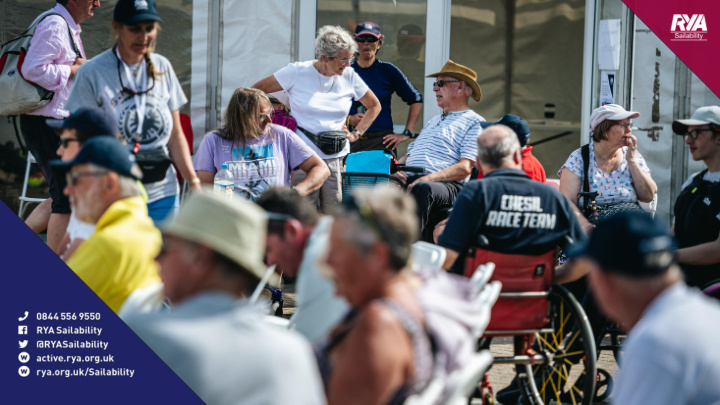



Safety – key principles, assessing risk and improving practice Robbie Bell and Brett Cokayne
Aims To discuss how we can create operating procedures with robust control measures that support the safe delivery of activity and help to ensure the safety of participants.
Sailability – Principles and responsibilities Delivery Principles: Responsibilities: • Safe, fun and open • Safety Awareness • Assurance • Culture of learning
RYA Key principles for safety management • Systematic • safety management activities are in accordance with a pre-determined plan and applied in a consistent manner throughout an organisation • Proactive • an approach that emphasises hazard identification, and risk control and mitigation before events occur • Explicit • All safety management control activities are current, documented and visible
Key principles in action • Your organisation has Identified hazards and assessed the risks prior to activities taking place and has removed any unnecessary risk • Your organisation runs activity in accordance with it’s own operating procedures and good practise guidelines • Your organisation has a plan for reviewing the way activities are delivered and the control measures in place to ensure they are fit for purpose and understood by all
Assessing Risk • Where do we start? • Hazard identification? • What’s the risk and who’s at risk? • Likelihood and consequences • What’s the chance of that happening? • If it happens what are the consequences? • Are risks acceptable? • Controlling risk • How do we achieve this? • Frequency of review • When should we review the risks? • What do we do with all of this information?
Operating Procedures • Operating procedures are born out of risk assessments, the boats we use, our customers, the operating area the aims of the organisation, our status as a provider and more. • The purpose is to ensure good practise is followed, to act as a handrail for instructors/volunteers and to evidence that you are aligned with external requirements.
If you were creating a new operating procedures document, what would the key headings be? • E.G What titles would you use on your index page? • Aims of the organisation • Operating Area • Hierarchy • Communication • Supervision • Personal Equipment • Participants • Additional Equipment • Vessels (training and safety) • Emergency Action Plan • Decision to go afloat • Entrapment Policy • Supporting Documentation…
Exercise: • In your groups… • Take one area each and discuss the procedures you would have in place (10 mins) • Appoint a group member to feedback • Aims of the organisation • Operating Area • Hierarchy • Communication • Supervision • Personal Equipment • Participants • Additional Equipment • Vessels (training and safety) • Emergency Action Plan • Decision to go afloat • Entrapment Policy • Supporting Documentation…
Exercise outcomes/examples: • Supervision: Instructor/volunteer qualifications, experience, competency, induction, training, ratios, monitoring, support • Vessels (training/safety): What’s available, loading, equipment carried, safety checks, restrictions, experience required, Killcords, seating, safe speed, Adaptations, strapping participants, training/familiarisation of operators • Operating Area: Zones, limits, restrictions, conditions, visual identification, byelaws • Personal Equipment: Lifejackets, buoyancy aids, who wears what, condition, checks, certification, storage, fitting • Entrapment Policy: Scenario training, mast head floats, rigging requirements, supervision, dealing with suspected entrapment. OEM Specs, loading
Further examples: • Aims of organisation – Charity/volunteer lead, particular focus • Hierarchy – who’s in charge. reporting structure, how people fit in • Participants – Who are they, what are their needs, what information do we collect, what information do we give them • Decision to go afloat – Absolutely key to safety, decision based on: • Participants ability, volunteers ability, conditions, weather, aims, forecast, equipment • Consequence of decision leads to appropriate briefing/communication with teams • Communication – Radios, checks, safety signals, emergencies, harbour authorities • Additional Equipment – Hoists, ramps, what when how • Emergency Action Plan – What and how, scenario training, easy to follow • Supporting docs – Maintenance logs, booking forms, safeguarding
Does this mean we are all safe now? • Be proactive • Be reflective • Learn from mistakes, incidents and accidents (yours or others) • Share Information • Promote a culture of safety
Why are we creating robust procedures? • Duty of care: • As providers of activity we have a duty of care to ensure the activity, facilities and participants are reasonably safe • Requirement for accreditation E.G RYA, AALA, British Canoeing • Useful handrail for your people
How do we ensure our procedures are implemented and remain fit for purpose? Training Review Monitoring
What next? • Review your risk assessments and procedures? • Have you identified all of the key risks? • Do you have appropriate control measures for the risks you’ve identified? • Do all of your volunteers understand them? • Do all of your volunteers implement them? • Are your participants as safe as they can be? • What can you do to improve safety even further?
Summary • Safety needs a systematic approach • Asses the risks, mitigate for them and remove unnecessary risk • Create robust procedures that everyone knows how to implement • Review your safety management systems regularly and change/update as required • Promote a culture of safety amongst your teams
Aims Revisited To discuss how we can create operating procedures with robust control measures that support the safe delivery of activity and help to ensure the safety of participants.
Further info: • RYA Powerboat level 2 courses • RYA Safety Boat Courses • RYA Guide to writing RTC operating procedures as part of your safety management system • Regional Courses and training • RYA Sailability
Any Questions?
Recommend
More recommend